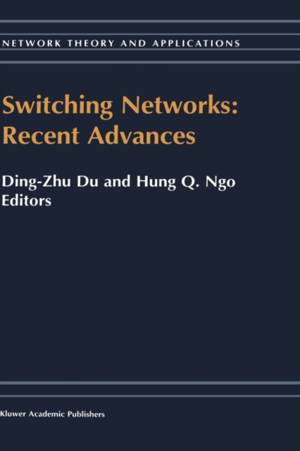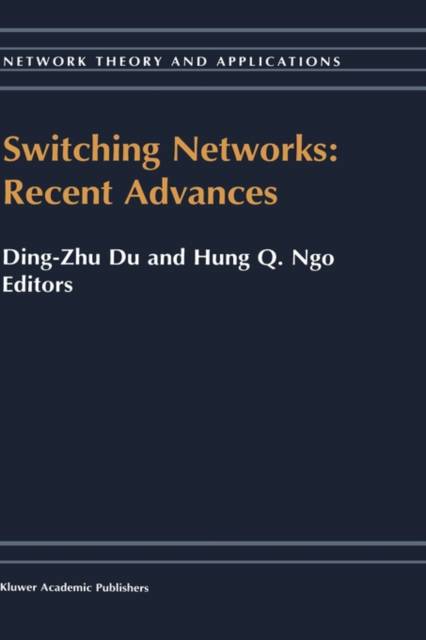
- Afhalen na 1 uur in een winkel met voorraad
- Gratis thuislevering in België vanaf € 30
- Ruim aanbod met 7 miljoen producten
- Afhalen na 1 uur in een winkel met voorraad
- Gratis thuislevering in België vanaf € 30
- Ruim aanbod met 7 miljoen producten
Zoeken
Switching Networks: Recent Advances
€ 153,95
+ 307 punten
Omschrijving
The switching net.work is an important. classic research area in t.ele- communication and comput.er net.works. It.s import.ancc st.ems from both theory and practice. In fact, some open problems, such as Benes conjec- ture on shuffle-exchange networks and Chung-Rmis conjecture on multi- rate rearrangeability, still attract many researchers and the further de- velopment in optical networks requires advanced technology in optical switching networks. In 1997, we had a workshop in switching networks held in NSF Sci- ence and Technology Center in Discrete Mathematics and Theoretical Computer Science (DIMACS), at Princeton University. This workshop was very successful. Many participants wished to have a similar activity every two or three years. This book is a result of such a wish. We are putting together SOllle important developments in this area during last. several years, including articles ill fault-tolerance, rearrang{ ability. non- blocking, optical networks. random permutation generat.ioll. and layout complexity. SOlllC of thos( art ides are research papers alld SOIllC an' sur- veys. All articles were reviewed. We would like to uWlItioll two special problems studied in those articles.
Specificaties
Betrokkenen
- Uitgeverij:
Inhoud
- Aantal bladzijden:
- 357
- Taal:
- Engels
- Reeks:
- Reeksnummer:
- nr. 5
Eigenschappen
- Productcode (EAN):
- 9780792369530
- Verschijningsdatum:
- 30/06/2001
- Uitvoering:
- Hardcover
- Formaat:
- Genaaid
- Afmetingen:
- 168 mm x 246 mm
- Gewicht:
- 684 g

Alleen bij Standaard Boekhandel
+ 307 punten op je klantenkaart van Standaard Boekhandel
Beoordelingen
We publiceren alleen reviews die voldoen aan de voorwaarden voor reviews. Bekijk onze voorwaarden voor reviews.










